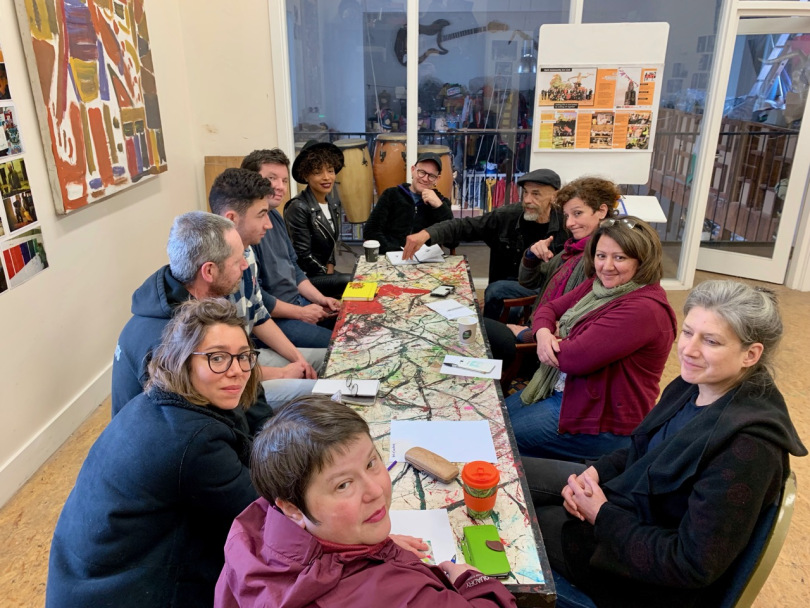The Sea Change conference took place over the 16th & 17th May 2019. This was the opportunity to continue a wider, strategic conversation about the current and future shape of the Community Arts landscape across the North and South of Ireland. Both similarities and differences were represented across the provision of Cork Community Arts Link and Community Arts Partnership.
Similarities were evident in the desire to listen to, represent and come alongside to amplify the voices of communities as they navigate the current social and political circumstances. Also, there are substantial challenges in the context of working within the restrictions of “survival mode” regarding the uncertainties of short and long term arts funding support. The possibility of planning for long term engagement and delivery seem to be a poor use of imagination.
The differences had to do with context: the South has had 10 years of austerity – the extent of the housing crisis is one indication of the impact on the current generation. The north on the other hand, faces it’s own limitations. There are now extended challenges associated with the lack of decisions being made by local government in almost two and a half years and services across the board are strained, leaving the arts to defend their position. Both sides of the border face uncharted territory associated with Brexit and whatever emerges from that. In any case systems are already disrupted across the island.
Ed Carol has written a short report around the content in the presentations. He mentions the words from Rita Fagan: “Who is going to write the story of what happened to us under austerity? We’ve got a duty- you’ve a duty – to tell the story… Our people are being boiled. We need to use our voices!”

This seemed like a wake-up call, catching the imagination of everyone in the room, realigning out creative attraction into this work.
Appropriate language and clear direction was found in the contribution from keynote speaker, Francois Matarasso.
He offered examples of art-making to explain participatory and community arts practices. Both offer forms of creative language for exploration and change through unique collective experiences. They empower communities who are grappling with the “field of questions bubbling under the surface”.

With this in mind, maybe there is a specific role for the community artist to work along with communities or for community on its own, to tell the stories of what it means to live in these days. Maybe the current disruption invitates those in community arts to find fresh meaning, shared understanding and a path through changing and unpredictable times.
Outcomes from this event include he development of two projects. More information about these will be shared in the coming weeks, so look out to see how you can get involved in these.

